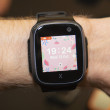Review: BlackBerry Torch 9850
Sep 7, 2011, 10:17 AM by Eric M. Zeman
Research In Motion's newest touch phone might be the BlackBerry that RIM's fanatics have been waiting for. Can the Torch 9850 fan the flames of desire in the CrackBerry faithful?
Form
Is It Your Type?

The BlackBerry Torch 9850 is the touch smartphone that BlackBerry fans have probably been waiting for. It won't slay the Android and iOS demons eating at RIM's marketshare by any stretch of the imagination, but it takes the BlackBerry platform to the next logical step. Here's why.
Body
The Torch 9850 is a wholly new piece of hardware from Research In Motion. It has a similar size and shape to the Torch 9800/9810, but loses the vertical sliding form factor and is instead a monoblock touch phone.
I find the design quite appealing. It doesn't stray from RIM's professional line of smartphones. It sticks to the standard motif of black mixed with several shades of gray, plus some chrome accents tossed in for good measure. It's a sharp looking handset. The quality of the materials is good, and it comes off feeling like a quality piece of hardware.
All the edges are rounded and have a comfortable feel. When in your hand, most of the surfaces your skin touches are rubber or plastic. The battery cover has a grippy, soft-touch paint job that plants it firmly in your palm. Given the small footprint, it will easily slip into a pocket, and be just as easily retrieved.
Most of the front surface is consumed by the display. Just below the display are the standard set of BlackBerry controls: Send key, BlackBerry key, optical track pad, Back key and End/Power key. The keys are smaller on the Torch 9850 than on other BlackBerries, but are raised nicely from the surface with a good shape and feel to them. These buttons all have good travel and feedback, and are easy to use.
The microUSB port is on the left side of the Torch 9850, all by itself. Looking for the volume toggle and other controls? They are all on the right side of the phone. Both key sets are teensy slivers of rubber, though they have a well-defined hump. The user-assignable convenience key is closest to the bottom of the Torch 9850. Its default action is for the camera, and it is a two-stage button. The stages are not clearly defined and travel and feedback aren't that great. The volume toggle is above the camera key. It is protected by rubber, but easy to find and use. The 3.5mm headset jack is closest to the top, and works with most normal stereo headphones.
The lock and silence buttons have been combined into a single control in the center of the top edge of the Torch 9850. There's no physical indicator for the button and the top edge is perfectly smooth, so it might be hard to find when in a hurry to silence a ringing phone. Travel and feedback was satisfactory.
The slot for the memory card is located under the battery cover. The cover comes off with no problems, and the card can be swapped out without powering down the 9850.
The Three S's
Screen
RIM has really stepped it up with the display on the Torch 9850. It measures a hearty 3.7 inches across the diagonal and packs in 800 x 480 pixels. That's the same as most Android phones. Add in RIM's "Liquid Graphics" and what you have is the best display I've seen on a BlackBerry. Performance factors such as brightness, clarity, and detail matched what's available on the Bold 9900/9930, but the added real estate give the Torch 9850 a clear advantage over its smaller-screened brethren. This is the best display to come from RIM. Period.
Signal
The 9850 runs on Sprint's 3G network (nope, no WiMax). Signal performance was typical for a Sprint device in NJ. The signal indicator consistently showed a medium-strength signal (2 bars), but the 9850 maintained only a tenuous connection to Sprint's network. It slipped down to 1X a few times (mostly when indoors), and lost Sprint's network entirely a few times. The 9850 also missed a few calls and dropped one. Keep in mind, Sprint's network is not as strong in my neck of the woods. I also took the Torch 9850 into Manhattan, where its network performance showed no improvement. This isn't great news, because Sprint's network is typically more robust in the city that never sleeps.
Sound
Despite the signal performance, the Torch 9850 is a great voice phone. The earpiece volume was excellent, which means calls in areas with lots of background noise are easy to hear. I didn't hear any hissing or other interference in the background. The speakerphone also performed very well. Set to maximum volume, it was louder than the 9900/9930's speakerphone and quite useful for tackling conversations while running around the room performing other tasks. The clarity and quality of speakerphone calls were also good. Ringers and alert tones can be set to near-concert volumes, so you'll always know when you've got a call or message. The vibrate alert was plenty strong.
Battery
The Torch 9850 does about as well as any other touch phone when it comes to battery life. A lot depends on how you use it, of course, but in general you're not going to have any problems getting through an entire day from a single charge. The device easily lasted through two days of light use. Heavy use of email or watching videos will definitely impact battery life. RIM says the Torch 9850 offers 6.8 hours of talk time. In my tests, I found that assessment to be accurate. Bottom line: Charge it every night, and bring a charger if you're going to be out of town for a few days.
Basics
Menus
The Torch 9850 runs BlackBerry 7 and it works exactly as it does on the Bold 9900/9930. The major difference, of course, is that the larger screen of the 9850 gives you way more room to interact with all of the menus and applications.
If you've used a BlackBerry in the past, you may have set up a BlackBerry ID. This is a great tool, as it helps migrate apps and accounts from an old BlackBerry to the new one. Doing this saves a lot of time come device set-up. If you don't have a BlackBerry ID, I strongly suggest you create one for future use.
The home page has the status bar, the notification bar, main screen/wallpaper, and the app tray. The status bar is used to access network-based tools and controls. The notification bar acts similarly to the drop-down notification shade in Android. Tapping it lets users quickly get a look at all of the unread messages they may have received.
The app tray is where users will really be able to customize BlackBerry OS 7 handsets. The tray offers five different user-configurable home screens / menus. The first (and default) screen lists all the apps. The others are broken down by group.
Beyond these home screen and menu tools, the other key behavior to learn is the press-and-hold gesture that is used to open secondary menus and other tools in some applications. This function often duplicates pressing the BlackBerry key.
The Torch 9850's larger, 3.7-inch display makes a huge difference in usability with the BlackBerry 7 software. Rather than feel like a touch interface tacked on after the fact, it feels far more natural than on the 9900/9930. It is also nice that RIM didn't give up on buttons completely. The dedicated send/end and BlackBerry/search keys and the optical track pad go a long way toward speeding up some actions on the device. It is a good mix of form and function.
It's not perfect, though. I find that the small sliver of screen space that needs to be pressed to get the notification tray to open is annoying small. It could be much larger, making it easier to use. Same goes for the bar uses to pull up the app tray. Why are these elements so small when there's so much screen to make use of?
Calls/Contacts
Calls
Pressing the send key opens the phone application and defaults to whichever of the three main phone app functions was used most recently (software dialpad, call log, contacts). The software dialpad is enormous and easy to use for dialing numbers. The call log performs exactly the same on the 9850 as it did on the 9900/9930. Calls can be highlighted by tapping them, and then the press-and-hold gesture (or pressing the BlackBerry button) pulls up the large list of options.
With a call in progress, the options presented are similar to what is seen on other touch devices, including quick access to the speakerphone, mute switch, and so on.
Contacts
On the 9900/9930, the Universal Search function lets you start typing a name from the home screen and jump directly to that person's contact data. Since there is no physical QWERTY keyboard on the Torch 9850, this search function is reserved for the contact application itself. Pecking out a contact's name in the search bar does the trick just fine, but it takes one more step than on the 9900/9930. The app itself stores tons of data, and integrates with Facebook data nicely. There's some nice color in the app, as well as the ability to use photo IDs, etc.
The calling and contact apps are amazingly useful, and work together seamlessly as one in order to make interacting with calls and contacts as painless and easy as possible.
Messaging
BlackBerrys are dedicated messaging devices, and the 9850 is no slacker. It does, however, have one serious drawback: The software QWERTY keyboard.
Quite simply, it is one of the worst I've used. The letters are terribly small and packed too tightly together. It literally took me 6 attempts to type my own name, for Pete's sake! The keyboard has three entry modes: Direct, Predictive, and Corrective. Using Direct mode offers no typing help at all. The Predictive mode attempts to correct as you go, and I found it often got in the way of what I was typing. The Corrective mode had the best results for me, but even then I had to do a lot of editing. I made no improvement after using the device for several days, which is what I would qualify as a typical break-in period. I sent some seriously cruddy emails while testing the Torch 9850. The Torch does support the software QWERTY in landscape mode, which makes it somewhat more usable, but it takes up too much of the screen's real estate and leaves too little room to see what you're typing.
Where physical keyboards appear to be RIM's forte, software keyboards are its nemesis.
OK, email. The 9850 handles Exchange, POP3 and IMAP4 accounts with ease. Users can add up to 10 different email accounts to the 9850. It can display HTML email with no problem, and there are simple touch controls to perform actions such as replying, forwarding, and so on. The SMS/MMS client offers threaded messaging, which are defined in text bubbles that help to visually separate the different sides of the conversation. Adding any sort of media to outgoing messages is a breeze. BlackBerry Messenger 6 is on board, of course, to allow for PIN-based messaging. This newer version lets users interact with one another from within select connected applications. As for instant messaging, Google Talk, Windows Live, and Yahoo are supported. AIM isn't. If you add a Gmail account to the 9850, the software automatically sets up Google Talk.
On the social networking front, the 9850 comes with official Facebook and Twitter applications pre-installed. Each works well enough of its own accord to keep users in touch with their circles of friends, family and colleagues. There is also a Social Feeds application that streams status updates and posts from Facebook, Twitter, Google Talk, Podcasts, and user-defined RSS feeds.
Extras
Media
Music
The 9850's media player is unchanged when compared to RIM's other BlackBerry 7-based devices. The basic search options let you cycle through artists, albums, playlists, songs and the like. The music player can be sent to the background and users may listen while doing other things, such as browsing the web. Incoming calls pause music, which resumes once the call is disconnected. There are some advanced options, but not too many. There is an audio boost; captions can be turned on/off; and music can be enhanced when the 9850 is used with headphones.
As for syncing, the latest version of BlackBerry Desktop manager is helpful for stuffing the 9850 full of your favorite playlists. It can add songs via USB cable or Wi-Fi. It is compatible with iTunes, for those who favor Apple's media management software. The Amazon MP3 store is installed to enable purchases directly from the handset and Slacker Radio is on board for streaming.
Sprint has also added its Sprint Radio and Sprint Music Plus into the mix just for the fun of it. Sprint Radio is Sprint's streaming music service, and Sprint Music Plus is another option for seeking out downloadable tunes.
Video
The 9850 also comes loaded with the same video options as found on the 9900/9930. There is a native video application that can play sideloaded or captured content. There is also a YouTube application for managing and interacting with your YouTube account.
You and I both know that Sprint can't leave its devices bereft of video options, so the Torch 9850 also has Sprint Football Live, Sprint NASCAR, and Sprint TV & Movies. These all offer streamed video content.
Given the multitudinous media options, you'll be pleased to know that movies look great on the 9850's 3.7-inch display. The streamed content, while suffering from the normal issues encountered by content sent over the network, looked as good as it would on an Android or iOS device. The sideloaded movies I stuffed onto the 9850 looked and sounded great.
Camera
Camera
I was hoping that RIM would have taken a few extra steps to make the 9850's camera stand apart from the rest of its BlackBerry 7 brothers, and those hopes were somewhat realized. Leaving the side convenience key set to launch the camera is the best and fastest way to get at it. It launches in perhaps a second or so.
The 9850 has a 5 megapixel camera with an LED flash and several focus modes. The 9930/9900 had a fixed focus camera, so the 9850's auto-focus is already a vast improvement. The focus modes include Continuous, Single Shot, and Off. When set to Continuous, the Torch 9850 is always focusing on whatever is in the center of the viewfinder. In Single Shot, you have to press the camera button half way to focus the camera before shooting. In Off, the Torch reverts to a fixed-focus mode. The default setting is Continuous, and I suggest you leave it set that way, as it is also the fastest and produces the best results.
The physical button can be used to take pictures, as can a software button on the 9850's display. Some basic options can be controlled from the viewfinder without calling up a separate menu. The flash can be turned off, on or set to auto. The shooting mode can be changed, which includes a wide list of options (auto, face detection, portrait, sports, etc.).
When you want to take a picture, the 9850 responds quickly. It shoots and saves pictures in about a second.
Gallery
The 9850's gallery app feels like and improvement over the 9900/9930, though I can't quite put my finger on why. Pictures are displayed in a grid or list; up to you. Pictures can also be arranged into galleries, and are automatically segregated depending on where they are stored (internal storage vs. memory card).
Once you open a picture, you can zoom through the entire gallery by swiping in either direction. Editing features are limited to rotating, cropping, and zooming. Pictures can be shared via email, MMS, Bluetooth, Twitter, GoogleTalk or Facebook. The slide shows are nice, and I like that many of the editing and other options can be accessed and used from the grid view without the need to open each photo to make changes to it.
Photos/Video
Photos
The 9850 easily trounces the 9900/9930 when it comes to picture quality. Though the device captures the same number of megapixels, the added focusing features make a huge improvement in the end results. Most images were sharper and less grainy in comparison to RIM's other 'berries. This was most noticeable when I blew the images up on my large PC monitor. Pictures showed excellent color representation, good white balance control, and accurate exposure.
Are the images worth sharing? Sure, via Twitter, Facebook, Flickr, Picasa, etc. You still won't be able to blow them up to wall-sized posters, but they serve well enough for capturing everyday events.
Video
The Torch 9850 shoots video at a maximum resolution of 720p HD. I was pleased with the video results from the 9850: Most videos were sharply in focus, even when panning quickly between subjects; It avoided the jitters that sometimes appear when sharpness is over-done; Colors looked bright and natural; and there was very little grain. Sharing options for video aren't as great as on other devices (no HDMI, for example), but you can easily upload to YouTube and so on.
Browse/Customize
Browser
The Torch 9850's larger display really helps make the browsing performance feel almost on par with what's available from some of the competing platforms. In my tests, the browser was quick to render pages, and web sites were well-formatted for the display. Zoomed all the way out, all text but the largest headlines on web sites were illegible, but at least you could see the entire page for navigation purposes. I still think the Android, iOS, and IE9 browsers are better for mobile devices, but RIM's latest browser has done a lot to close the gap.
Customize
Consumers will have plenty of control over the 9850 Torch. There are enough controls, settings, and toggles to upend the entire appearance and behavior of the phone. The ones that matter most during the first five minutes of ownership — wallpapers, ringtones, alerts, and so on — are easy to adjust.
Those who end up with a 9850 issued by their employer may find that the IT department has locked down tons of features. Such is the life of an office drone and the results of RIM's over-engineering IT controls.
Extras
Apps
The Torch 9850 ships with about the same amount of software as any other Sprint smartphone. It's loaded with Sprint-branded applications, such as the aforementioned Sprint Music Plus, NASCAR, TV & Movies, Football Live, and Radio. BlackBerry App World, which was just updated to version 3.0 today, offers thousands of applications that are available for free and for sale. The selection isn't as vast as what's available to the Android and iOS platforms, but developers have been diligent enough to cover the essentials, such as Weather apps, tip calculator apps, and farting apps. One warning, however: a frustrating number of apps require a device reboot to install, which takes ages. Save your reboots up and do them all at once.
Bluetooth
The Bluetooth functions of the 9850 worked well. Pairing with headsets, speakers, other phones and PCs was a snap. Call quality through my car's Bluetooth connection was excellent. Quality of music through stereo Bluetooth speakers was acceptable, but not great. I had no problems using the Bluetooth radio nor its functions.
Clock
The 9850's clock application is the same as on the 9930/9900. Press the screen lock button, and the time is visible in digital form at the top of the display. It's not very large. I wish the lock screen had a bigger clock available to it. Alternately, you can set the 9850 in "bedside mode" which show a large clock and lets you interact with the alarm. Bedside mode can also be activated when the 9850 is charging, which means the clock is visible any time the 9850 is plugged in.
GPS
The 9850's GPS radio performed well, and was able to locate the device in about a minute. That's not as fast as some other devices, but was fast enough for most navigation purposes. Accuracy was as good as about 25 feet.
The Torch 9850 is the first among the newer BlackBerrys to ship with TeleNav's navigation software, which Sprint offers for free. I took it for a quick spin, and the app works just as well on the 9850 as it does on other handsets for mapping routes and directions.
Neither BlackBerry Maps nor Google Maps is on board, but each can be downloaded separately from App World.
Video
Wrap-Up
The BlackBerry Torch 9850 is a really solid smartphone. It's not perfect by any stretch of the imagination, but it fills a glaring gap in RIM's device lineup. (It's a wholly different animal from the Storm/Storm 2 and much better than both of RIM's previous touch phones.)
The 9850 is well-made, looks attractive, and all the aspects of the hardware function as they are meant to. Signal performance was a bit iffy, and that led to mixed results concerning call quality. Data speeds, however, were reasonably good. Battery life was decent for a touch phone, though some BlackBerry faithful may be shocked at the less-than-three-weeks of time between charges.
The messaging components are all locked into place and are as robust as any other BlackBerry; email, SMS, IM, Twitter, Facebook are all ably conquered. The media prowess of the 9850 is an improvement over other BB7 devices thanks to the larger screen and improved camera.
The only real niggle I have with the 9850 is the crummy software keyboard. I found it to be unusable, and that could be a deal-breaker for those who have an addiction to messaging.
In the end, however, there's little to complain about. RIM has done a good job at bringing BlackBerry 7 to life in a classy and capable smartphone. I can easily see the Torch warming the hearts of BlackBerry fans.

Comments
BB FAIL!! Storm 2 vs Torch 9850
This phone sucks. Someone said it best, Its a lot of fun to "get info from" but horrible to "input info into". The keypad experience is super duper duper wack,
I was so happy to know this phone came with SURETYPE, but its not the same and when in portrait mode that little arrow that opens and closes the keyboard is a disaster. It tests my patience when im typing I cant help in anyway not to tap it and close my keyboard, the keys are small and close centered. its a disaster = FAILED KEYBOARD.
I wont even start on Landscape mode. enough said - go go gadget...
(continues)
















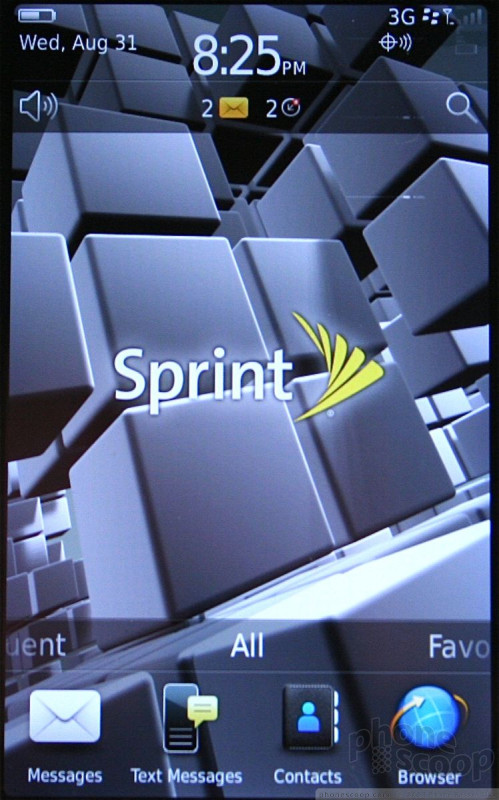





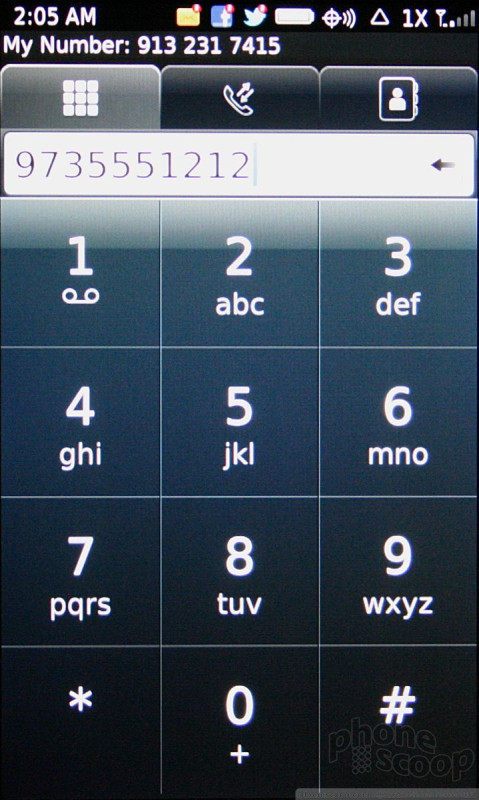



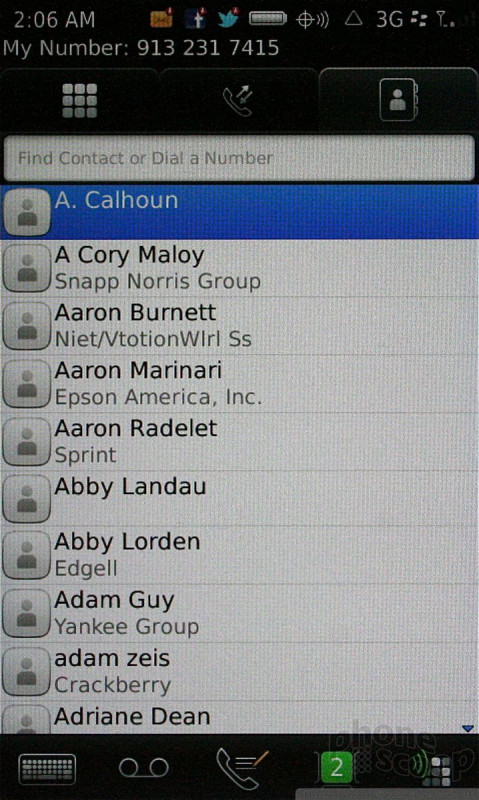



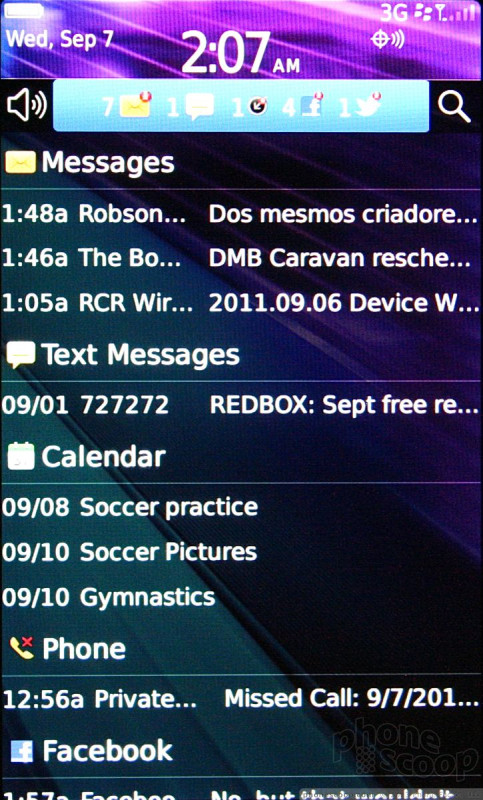






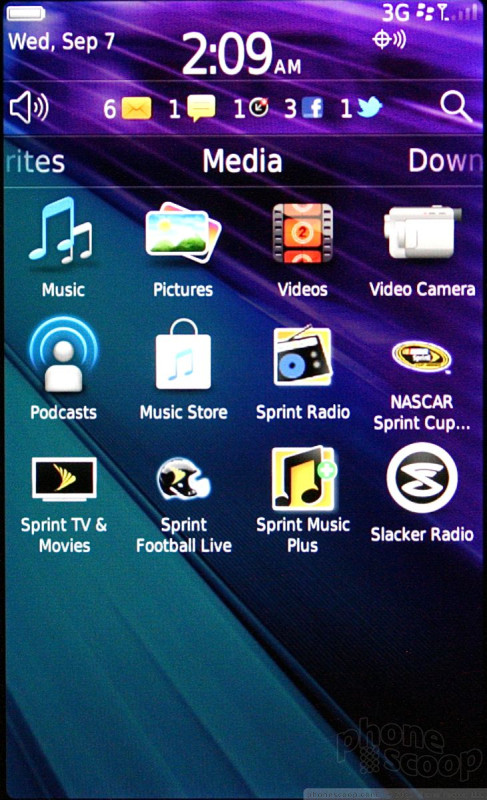




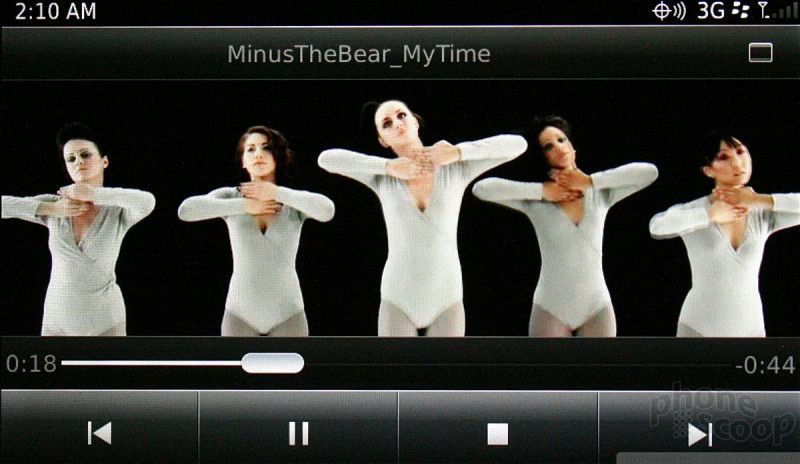


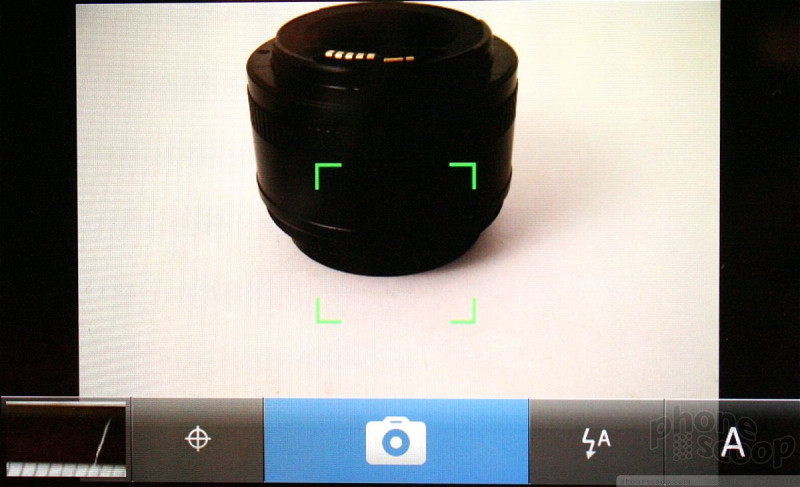



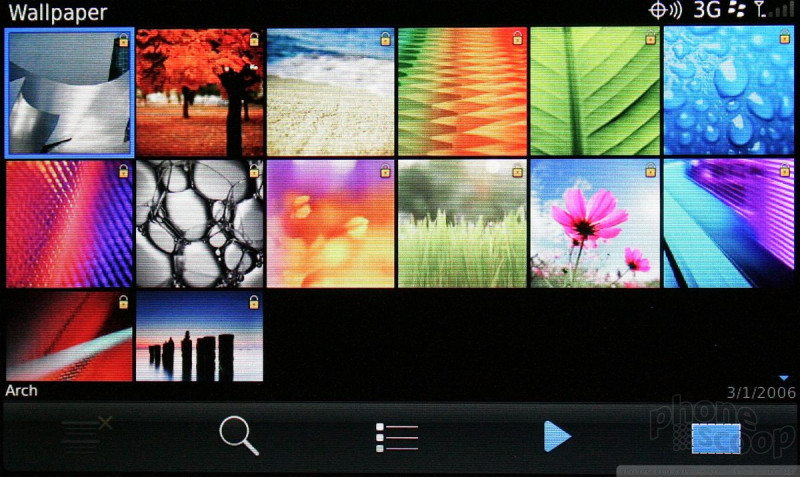


















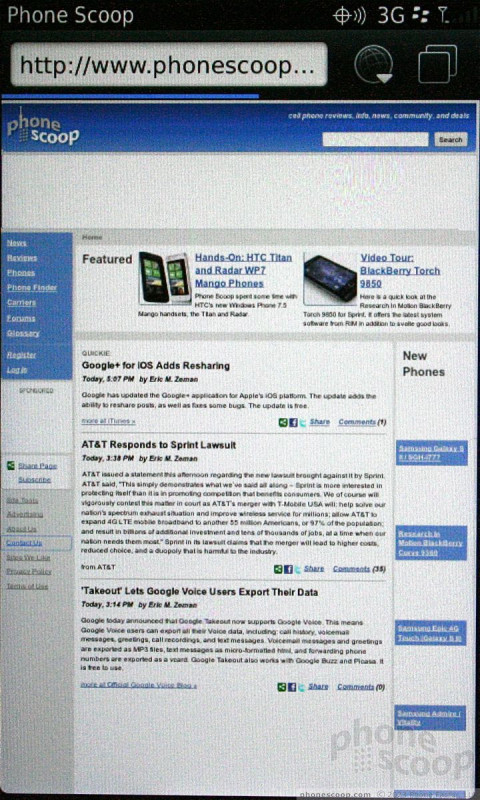



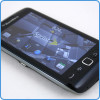 Video Tour: BlackBerry Torch 9850
Video Tour: BlackBerry Torch 9850
 BlackBerry Torch 9850
BlackBerry Torch 9850


